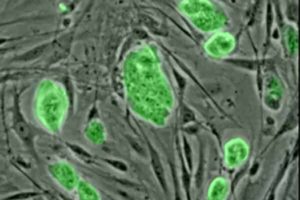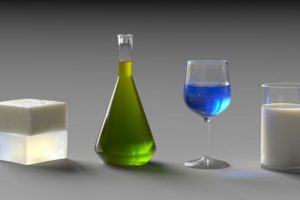weizmann institute of science
Gas rich galaxies confirm prediction of modified gravity theory
COLLEGE PARK, Md. — Recent data for gas rich galaxies precisely match predictions of a modified theory of gravity know as MOND according to a new analysis by University of Maryland Astronomy Professor Stacy McGaugh. This — the latest of severa…
Hope for stroke victims
Much of the devastation of stroke and head trauma is due to damage caused the overproduction of a substance in the brain called glutamate. Preventing this damage has been impossible, until now, as many drugs don’t cross the so-called blood-brain bar…
New technology gives on-site assessments in archaeology
DURHAM, N.C. — The ability to tell the difference between crystals that formed naturally and those formed by human activity can be important to archaeologists in the field. This can be a crucial bit of information in determining the ancient a…
Physical environment influences stem cell development
Jerusalem — September 6, 2010 — A researcher at the Hebrew University of Jerusalem, together with Israeli and foreign collaborators, has revealed how physical qualities — and not only chemical ones — may have an influence in determining…
Gene Responsible For Anemia (Type CDA-1) Discovered
A combined effort between Israeli scientists has led to the discovery of a gene responsible for a type of anemia primarily found in a number of Bedouin families, called congenital dyserythropoietic anemia-1 (CDA-1). The findings, published the December issue of The American Journal for Human Genetics, could lead to effective detection and eventually treatment of the disease. In addition, understanding the role of this gene?s protein product in the body could provide important clues to other types of anemia, as well as to the general mechanisms of blood cell formation.
Transplanted tissue could offer a solution to kidney donor shortage
Instead of searching for a kidney donor, a new study suggests, one might be able to grow a new kidney. A team headed by Prof. Yair Reisner of the Weizmann Institute of Science has induced human stem cell tissue to grow into functional kidneys, and have accomplished the same with porcine stem cell tissue. Published in Nature Medicine, the method could lead to a promising solution to the severe shortage of kidney donors.
Bedouin illness may provide insight into anemia
Research out of Israel has led to the discovery of a gene responsible for a type of anemia primarily found in a number of Bedouin families, called congenital dyserythropoietic anemia-1 (CDA-1). The findings, published the December issue of The American Journal for Human Genetics, could lead to effective detection and eventually treatment of the disease. In addition, understanding the role of this gene?s protein product in the body could provide important clues to other types of anemia, as well as to the general mechanisms of blood cell formation.
Genes, Neurons, Internet Found to Have Organizing Principles-Some Identical
How do 30,000 genes in our DNA work together to form a large part of who we are? How do one hundred billion neurons operate in our brain? The huge number of factors involved makes such complex networks hard to crack. Now, a study published in the October 25 issue of Science uncovers a strategy for finding the organizing principles of virtually any network ? from neural networks to ecological food webs or the Internet.




